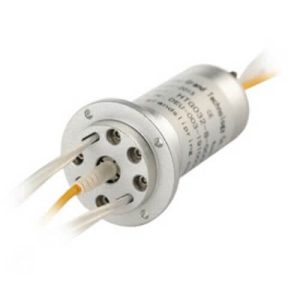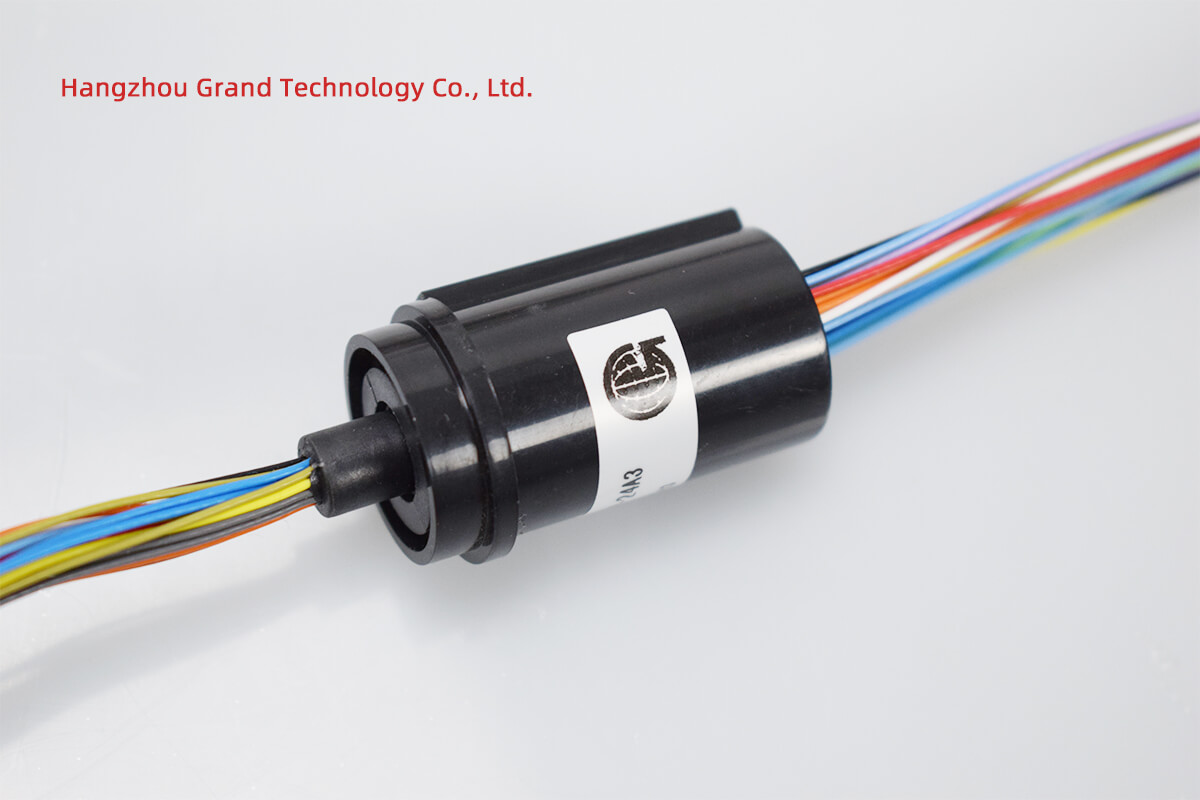Before we delve into the topic, let’s figure out a few basic concepts about the slip ring. A slip ring is an electrical device that is used to transfer power and data to a rotating structure from a stationary one. The basic function of the slip ring is to provide continuous rotation while transmitting power and data thus leading to, improving application performance, simplifying operation, and eliminating the risk of wiring damage between the movable parts. A slip ring is mounted on a shaft and consists of a band of electrically conductive material. The slip ring is connected through windings or other electrical connections to the rotor or rotating assembly.
Functions of Slip Rings
Slip rings are primarily used to rotate electrical assemblies making an electrical connection between moving conductors stationary. This enables transmitting electrical signals from the stationary power source to the rotating component.
Some examples of devices that use slip rings include gyroscopes, electrical generators, synchros, etc.
· Slip rings are usually called collector rings or rotary electrical joints or electric swivels and are fabricated from a variety of range of conductive materials, that consist of copper or gold alloy contacts. The insulation between the shaft as well as ring includes a wide array of synthetics like plastic and nylon and each ring is rated by its specific characteristics like speed, voltage, current, and insulation resistance amongst other factors. Manufacturers post-manufacturing calculate an estimated working life for each ring to guarantee good functionality, replacement, and efficiency. Estimated life is structurally the time period till which a slip ruing can function with speed and length with efficiency calculated on the basis of the number of rotations made by the slip ring per minute.
· Slip rings are sold not individually but as assets of ring and brush sets as these constructions often include brush blocks or brush generators. These kinds of sets or combinations serve as custom combinations or component replacement requirements.
Slip Ring Materials
· While building slip ring materials, one factor should be essentially considered, and that is, a slip ring is one of the core elements that will need smooth functioning and it should also lead to an uninterrupted working of the machine on which it is mounted.
· Slip ring is a major part of electrical contact and comes under two groups, a rotating electric contact, an electrical slip ring, and an electric rotating joint. Other belongs to line slip and electric contact, the most widely used application is high-speed rail.
· Electric slip ring has eminent advantages as compared to traditional carbon brush as well as a mercury slip ring.
· One of the most important issues in practical life practical is the slip ring`s working life, as many a time the life of the slip ring gets shortened by the type of assembly technology, materials, functionality speed, and surrounding working environments, such as the humidity as well as temperature and most important structure of slip ring.
In order to solve this problem, many external factors like the temperature have to be considered when selecting a design as well as model selection, as the temperature influences the reliability and smooth running of the slip ring when the slip ring, bearing as well as electric contact release heat. Also, in practical application, a few things that should be taken into account includes the material selection, the technique of mounting, the presence of vibration or not, estimated speed, and speed as well as abrasive resistance of the slip ring. All of thee should match the insulation properties of the slip ring.
Basic Structure of Slip Rings
The slip rings are made up of materials consisting of steel, copper, or Phosphorous bronze. While building it, it follows the principle of having a very hard exterior compared to the slip ring brush material in order to ensure minimum damage to the rings. The structure of the slip ring consists of ensuring that the outer part of the slip ring is in continuous sliding contact with other stationary conductors or stationary brushes. This allows continuous rotating devices to have uninterrupted contact between the external circuits and rotating assembly.

Major Types of Slip Rings
· Mercury-wetted slip rings- Mercury-wetted slip rings, has a unique characteristic of low resistance and stable connections and use the principle which puts more importance on the pool of liquid metal molecularly bonded to the contacts instead of sliding brush contact.
· Pancake slip rings- This kind of slip ring consists of conductors arranged on a flat disc that is centered on the rotating shaft as concentric rings. The advantage of this kind of slip ring is that this configuration has greater weight and volume for the same circuits, greater capacity, and crosstalk with a chance of greater brush wear thus readily collecting wear & tear debris on its vertical axis.
· Wireless slip rings- These kinds of slip rings perform the function of transferring both power and data without any wires via a magnetic field, that is specifically created by the coils that are placed in the stationary transmitter & rotating receiver. They are constructed on the principle of not relying on the typical friction-based metal and carbon brush contact methods that have been engaged by slip rings ever since their invention.
· Standard slip rings: These are the most accepted slip rings as they fit easily into the majority of equipment.
· Custom slip rings: These are customized according to client and industry meets and are specifically designed on an individual level.
· Fluid +Electrical: These include offering full-fledged solutions to your industry needs and are fully assembled, tested, and qualified. According to industry norms and regulations and offers high performance and longevity of the ring.
Some other Types of Slip Rings Include
· Pin slip rings
· Collector Rings
· Swivel Connections
· Electric Swivels
· Slip Ring Assemblies
· High-Speed Slip Rings
· Fibre Optic Slip Rings
· Printed Circuit Slip Rings
· Fibre Optic Rotary Joints
· Rings
· Slip-Ring Brushes
· Slip Ring Position Sensors
· Slip-On Flanges
· Slip Hooks
· Slip Clutches
· Slip Sheets


